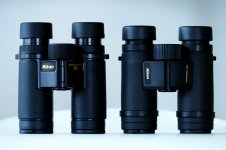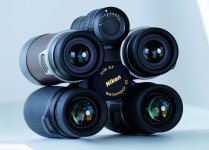I would be grateful if you could say a little more about the MHG 8x30 vs Leica Ultravid 8x32 comparison. Thank you!
The task is not easy, to convey my observations and feelings, which are completely subjective, even for me. Today I feel like it, another day I look for another... Nothing is permanent.
Leica vs MHG... if I had to have one, it would be a difficult choice, that's why I have both. I use MHG more often, the greater eye relief - although I don't wear glasses - makes it easier to see, 101g less weight - without accessories, 10m larger field of view and better ergonomics for me.
But when I pick up UVHD+ I feel different, I put it to my eyes and... it's Leica. The feeling of quality is rather an individual matter, but it is a parameter worth noting.
As I wrote in previous posts, the image quality is quite similar, except for the field of view. Leica has different characteristics of edge blur. The color rendering can be a bit surprising in Leica, you can no longer see the red dominance, like in HD models from a few years ago, but a very delicate shade of yellow with green - something like the latest production SLC x42 or Kahles Helia S. MHG adds a bit of red to this palette, which generally warms up the image in MHG. But the difference is so subtle that it is probably unnoticeable to most observers, especially if there is no direct comparison. The overall impression is interesting, binoculars twice as cheap, may be (is) more interesting. I will also add that Leica controls reflections better.
You have to try it yourself.


















